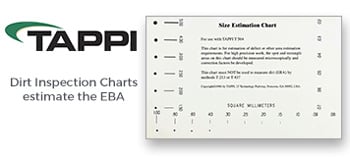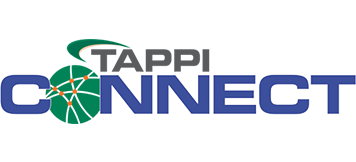Paper shares: a lower than average risk, Solutions! Online Exclusives, June 2003
Paper shares: A lower than average risk
by Håkan Rylander, SCA
(Editor’s Note: This story is available on the SCA website, www.sca.com,
and appears here in a slightly edited form.)
The SCA Investor Report brought together three leading pulp and paper
analysts for a roundtable discussion about the paper industry’s
economic situation, acquisition strategies and the valuation of paper
shares.
Roundtable participants: Catarina Ihre, Nordea Securities; Mattias Sjödin,
Carnegie; and Lars Kjellberg, Credit Suisse First Boston.
SCA Investor Report (IR): How do you view the economic situation
for paper products companies?
Ihre: During the summer (of 2002) there were a number
of leading indicators that began to look positive, but since then the
economy has declined again. Suddenly the world looks a little uncertain.
However, paper products companies in general feel quite stable.
Sjödin: All of the leading indicators have declined,
especially in the U.S.
Kjellberg: The paper products industry needs greater
demand, but this has disappeared. Advertising investments are extremely
important for graphic paper, but basically these are currently at zero.
And there is no indication of them increasing.
Ihre: Generally, this means that I am adopting a cautious
approach to 2003. It’s possible that we could see reasonable profitability
during the second half of next year. We analysts will be able to maintain
our forecasts, but change the year from 2003 to 2004.
Sjödin: I don’t believe that volumes will fall
(during 2003). On the other hand, what will happen to prices is uncertain.
Volumes won’t increase so much that they offset any falling prices. I’m
not talking about hygiene products, but about traditional forest industry
products.
Kjellberg: A critical factor is that the industry continue
with its disciplined approach to the way it uses capacity. If this is
not done, there is a 20 percent downside on prices.
Sjödin: And even more on share prices.
IR: To what extent does this gloomy picture also apply to other
sectors, such as hygiene products and packaging?
Ihre: Hygiene products, and to a certain extent packaging,
are affected more by private consumption and therefore have a different
cycle.
Kjellberg: The greatest uncertainty is for newsprint,
less for packaging and even less for hygiene products, which are nearly
independent of economic cycles.
Sjödin: For newsprint, much depends on the advertising
economy, but for hygiene products and packaging, it is more company-specific
factors that have an impact. These include technological developments,
marketing and having the appropriate structure.
IR: Currency rates are another factor that companies are unable
to control, but that can have a major impact on results.
Ihre: Yes, many analysts foresee a structural weakening
of the dollar. However, many of the companies now have a better balance
between their production facilities and sales than they had 10 years ago.
Therefore, currency exposure is not as high. But the strength of the dollar
is an important indicator of the U.S.’s ability to be the engine of the
world economy.
Sjödin: If the dollar falls, there is normally
a directly negative effect on European shares.
Kjellberg: However, many of the historical connections
have now been discarded. For example, the variation of pulp prices according
to share prices is something you can forget.
Sjödin: Absolutely. What we have also seen is that
paper products companies’ shares have kept their value rather well when
the rest of the stock market has been in sharp decline. Particularly all
of the companies that focus on consumer products, such as SCA. An explanation
is that the companies generate strong cash flow.
Kjellberg: The balance sheets are also generally in
good shape. In addition, the price structure is excellent despite the
weak economy.
Ihre: The fact that the prices have held their position
is partly a result of consolidation. With fewer players in each segment,
there is less risk of a senseless price war. Another extremely positive
trend in recent years has been that the paper products companies have
become more efficient.
IR: Is there major potential for further increases in efficiency?
Ihre: There is always work to be done on the margin,
but I believe the major shift in level has already been implemented, at
least in Europe. Now it is more the details that must be considered.
Kjellberg: However, we still haven’t seen the results
of the increased efficiency. This will happen when the mills can work
at full capacity.
Sjödin: And if prices can then remain the same,
there is enormous leverage for profitability.
IR: Do you primarily regard an aggressive acquisition strategy
as a factor that raises the risk (for a) company?
Sjödin: Normally, it raises the risk. In the traditional
forest products industry, it is difficult to prove that acquisitions add
value for the purchasing company’s shareholders.
Ihre: If you look at the profitability of SCA, for example,
over the past 10 years, it is clear that it has sold low-performance units,
like fine paper, and secured quite high payment for them. Capital has
instead been invested in packaging and hygiene products, in which it has
increased its profitability in pace with its acquisitions. It really is
a textbook example of how this should be done.
IR: Does a history of successful acquisitions hold a strong forecast
value for the future?
Kjellberg: Yes, I think so. SCA has established a reputation
whereby the share price reacts positively when it makes a major acquisition.
For a company with a poor acquisition history, the price would fall correspondingly.
Sjödin: At the same time, it can be presumed that
the companies that failed in their acquisitions have probably learned
from the experience and will be more cautious next time.
IR: Would a major failed acquisition have a strong impact on confidence,
even for a company with a favorable track record?
Kjellberg: Yes, reputations are sensitive and it only
takes a little to destroy them.
Ihre: And they can take years to repair.
IR: Listening to you, it almost sounds as though the interesting
aspect is not actually what strategy a company has, but the ability to
implement it. How do you assess this ability?
Kjellberg: Companies must create trust, which, after
all, is rather fragile. But there is also another interesting purchasing
trend in the industry. Since paper companies generate strong cash flow,
they attract new investors who buy out companies from the stock market.
This has happened to three rather large paper companies in Europe.
Sjödin: And with the prevailing valuations, more
buyouts would have occurred if they had not been blocked by deadlock among
the owners.
Kjellberg: If we go back to where we began, with market
outlook, we can see that uncertainty is extensive today—much greater
than a few months ago. It really isn’t possible to make a reasonable assessment
of the economy. In a situation like this, it is important to try to see
beyond the current problems.
Ihre: Uncertainty makes investors look more at stable
key data linked to the balance sheet and sales, which vary much less than
key data linked to profits.
Kjellberg: Yes, there has been a change in how companies’
values are regarded. We also believe that the European paper companies
now have a higher earnings capacity over an economic cycle compared with
a few years ago.
Ihre: It can be debated whether individual transactions
were positive or not, but the general trend toward a more concentrated
market has led to improved profitability.
Sjödin: From a share perspective, paper is no longer
regarded as a high-beta industry, meaning that it swung more strongly
than the stock market in both directions. Now it is more a case of the
risk being lower than the average in the stock market.





